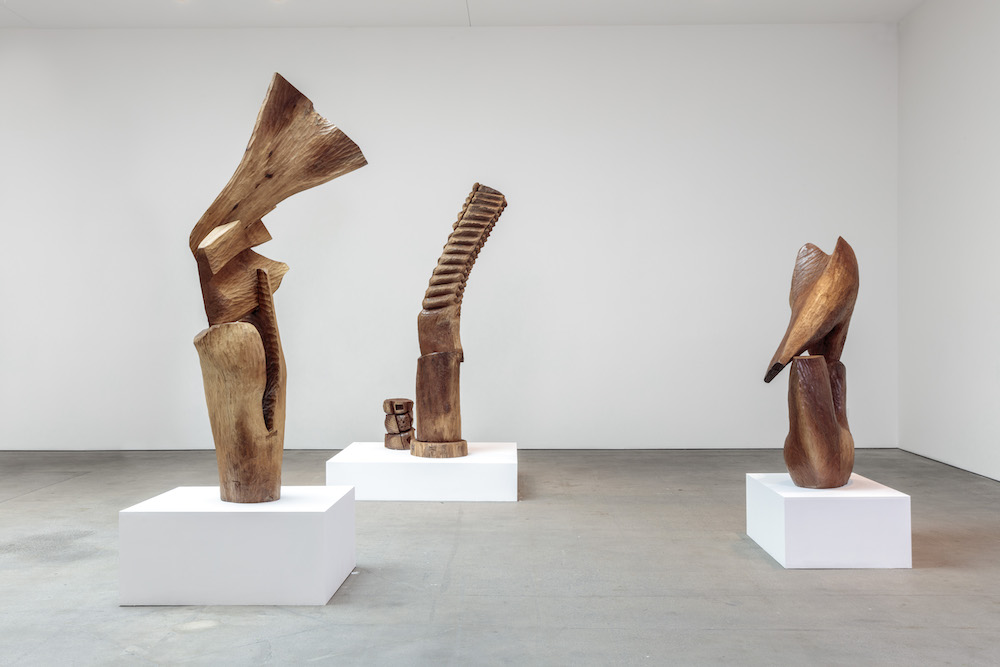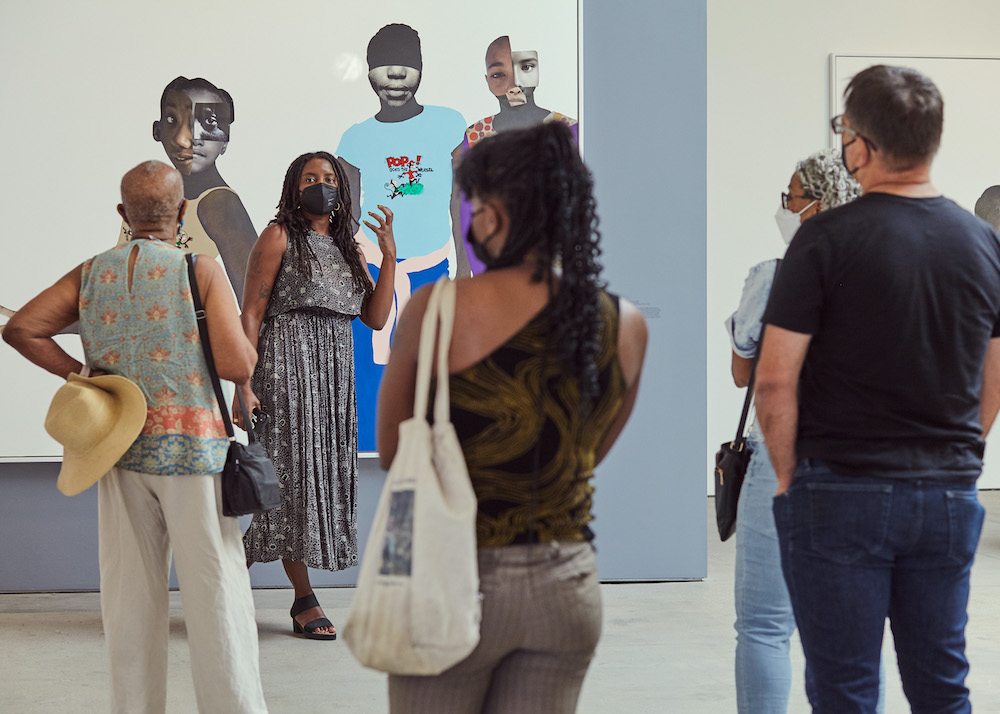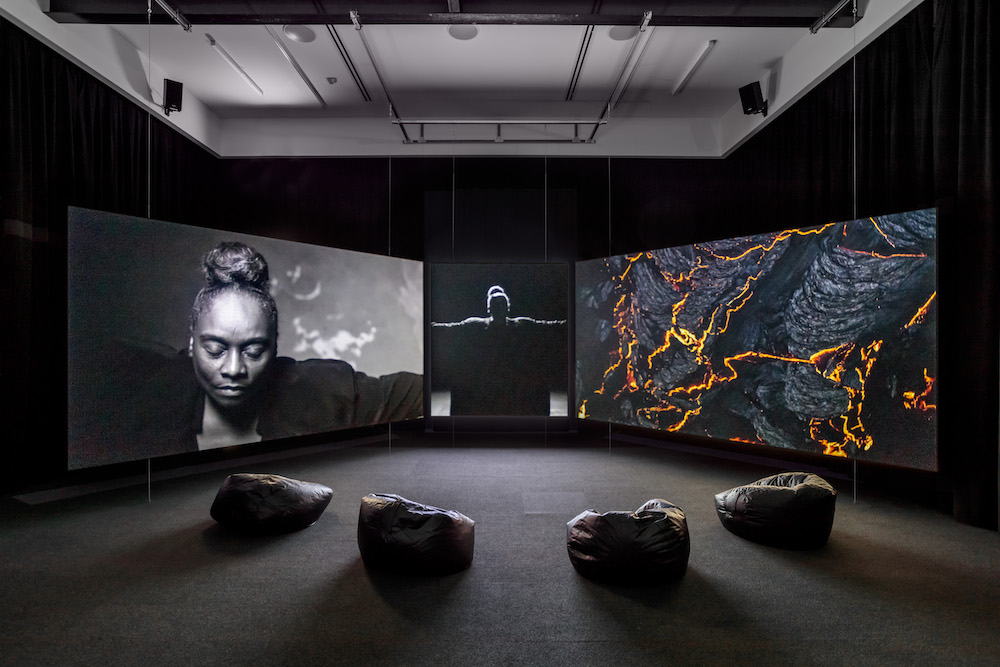It has long been the rule for nonprofits of all kinds to create and maintain paternalistic relationships with the causes and communities they claim to serve. Unfortunately, there are several arts nonprofits that fit this bill. So it’s refreshing to catch up with an organization such as Art + Practice, which has directly contributed to positive and long-term impact in the majority Black community in Leimert Park, since its founding in 2014.
Art + Practice’s partnership with First Place for Youth is providing support to anywhere from 85 to 100 transition-age foster youth at any given time. Their collaborations with institutions such as the California African American Museum (CAAM) and the Hammer Museum bring free arts programming to South Los Angeles while promoting artists of color. Their most recent collaboration began in 2022 with PILAglobal, a nonprofit dedicated to providing educational support to children and families experiencing global forced migration. Partnerships such as these are noble and necessary, but they aren’t automatically effective just because all parties involved want them to be, or say they are. So then—in places where these collaborations have had true impact as intended—what has been the driver of these successes?

Installation view of “Thaddeus Mosley: Forest” exhibition at Art + Practice.
It starts with how much honesty any business or nonprofit entity brings to its mission. Art + Practice is the brainchild of Black artist Mark Bradford, who still lives in South LA, where he grew up. From its very founding, A+P has been an extension of Bradford’s citizenship in South LA, demonstrating what it looks like to lead with a “village mindset.” “The village serves as another element of home,” says Thomas Lee, the director of First Place for Youth. “How do we create a greater sense of home with immediate services, but also expand that sense of home in the larger village of our communities and our society?”
This high level of intentionality present at every level of First Place’s operations is coupled with A+P’s provision of almost-free space for services right in the Leimert Park area and generous monetary backing: over $100,000 a year in scholarships and support for youth aging out of LA’s foster care system, most of them Black. This shows up for scholars as individual support in pursuing their education and employment goals; onsite job shadowing opportunities with A+P’s team to provide opportunities for First Place’s young adults to see what it’s like to work at a nonprofit arts organization; offsite job tours at large-scale businesses; roundtable discussions with leaders in their field of expertise and events celebrating their successes.
As a result, youth graduating from the transitional program go on to enjoy continued growth and success in just about every walk of life. In fact, anywhere from 10 to 15% of graduates go on to pursue the arts professionally.

Exhibition Walkthrough of
“Deborah Roberts: I’m”
at Art + Practice.
Sophia Belsheim, who has been with Art + Practice since its conception and has worked her way up to the director position, feels that the organization’s very targeted mission and vision attracts similarly focused and welcoming people. “There’s this amazing connection to the community that’s very direct.” she says, referencing Bradford’s ties to Leimert Park and co-founder Eileen Harris Norton’s origins in Watts. “They understand it. They’re not just coming in from the outside but working within. That’s something that’s always captivated me since I’ve worked here,” she continued. New initiatives are launched only after assessing the needs of the community, taking care not to displace any existing businesses. The goal is for people to view the A+P gallery space as a conduit to engaging with world-class art while out and about grabbing coffee, buying books and doing the everyday things that people do—no pressure to purchase anything.
The main determining factor is the impactful partnerships A+P launches, treating them like genuine friendships you treasure. When speaking of the staff at the CAAM, who she’s working with on their five-year collaboration, Belsheim says, “They are incredibly thoughtful about how to conceptualize their programs and they bring us into the dialogue, and that feels like a true collaboration. I think where collaborations tend to not work out is when there is dictation—when it’s not about openness and welcoming.”
According to the US Supreme Court, corporate entities are people, and the Citizens United ruling by the same court has declared that money equals speech. There is a dark side to the consequences of these laws, and yet there can also be a light side—it’s simply a matter of choice. Accordingly, we can view A+P as a person who chooses to put their money where their mouth is, who embodies the characteristics of a respectful neighbor and thoughtful friend, and who uses their position and privileges to benefit the peers within their community. And this is all because A+P’s founders allow it to be an extension of their own village mindset.











0 Comments